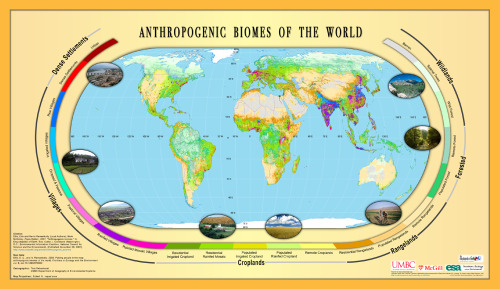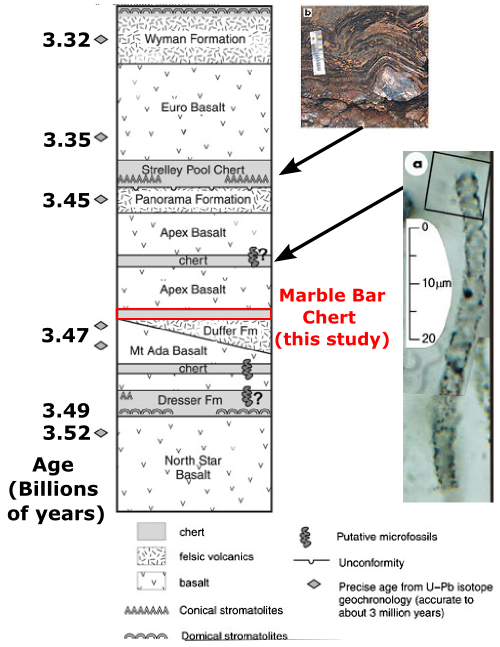![]() Chris is not the only one who comes across fascinating things via Twitter. Just yesterday I was introduced to the concept of anthropogenic biomes. In physical geography, biogeography, and ecology classes we learn and teach about biomes – major global ecological communities, classified according to the dominant natural vegetation. But more than 3/4 of the world’s ice-free land shows the evidence of human activity – and the remaining 1/4 of the planet supports just 11% of the Earth’s terrestrial net primary production. Recognizing these things, Erle C Ellis and Navin Ramankutty of University of Maryland-Baltimore County and McGill University, respectively, have recently advanced the idea of anthropogenic biomes that characterize the human-altered landscape. Their new view of the world is shown below:
Chris is not the only one who comes across fascinating things via Twitter. Just yesterday I was introduced to the concept of anthropogenic biomes. In physical geography, biogeography, and ecology classes we learn and teach about biomes – major global ecological communities, classified according to the dominant natural vegetation. But more than 3/4 of the world’s ice-free land shows the evidence of human activity – and the remaining 1/4 of the planet supports just 11% of the Earth’s terrestrial net primary production. Recognizing these things, Erle C Ellis and Navin Ramankutty of University of Maryland-Baltimore County and McGill University, respectively, have recently advanced the idea of anthropogenic biomes that characterize the human-altered landscape. Their new view of the world is shown below:

Ellis and Ramankutty argue that “anthropogenic biomes are in many ways a more accurate description of broad ecological patterns within the current terrestrial biosphere than are conventional biome systems that describe vegetation patterns based on variations in climate and geology” because such natural patterns are rarely found in large areas outside of the wildland anthropogenic biomes. A few highlights from this view of looking at the world:
- 40% of humans live in dense settlements biomes, 40% live in village biomes (38% urban), 15% live in cropland biomes, 5% live in rangeland biomes, and 0.6% live in forested biomes
- dense settlements and villages cover 7% of the Earth’s ice-free terrestial area
- village biomes (dense agricultural populations) cover 1/4 of the Asian continent
- “anthropogenic biomes are best characterized as heterogeneous landscape mosaics, combining a variety of different land uses and land covers”
- wildland biomes are found in the least productive areas on Earth
You can read more about this concept in their 2008 Frontiers in Ecology paper (pdf here) and on their website. You can even print a wall map, or play with the data in Google Earth or ArcGIS. I think anthropogenic biomes are a pretty neat concept and next time I teach my introductory earth science course, I’m going to use them to better tie the required chapter on biomes together with the big themes of the class. What do you think? Is this a useful concept? Or at least a pretty map to look at?





Nice plan for content warnings on Mastodon and the Fediverse. Now you need a Mastodon/Fediverse button on this blog.